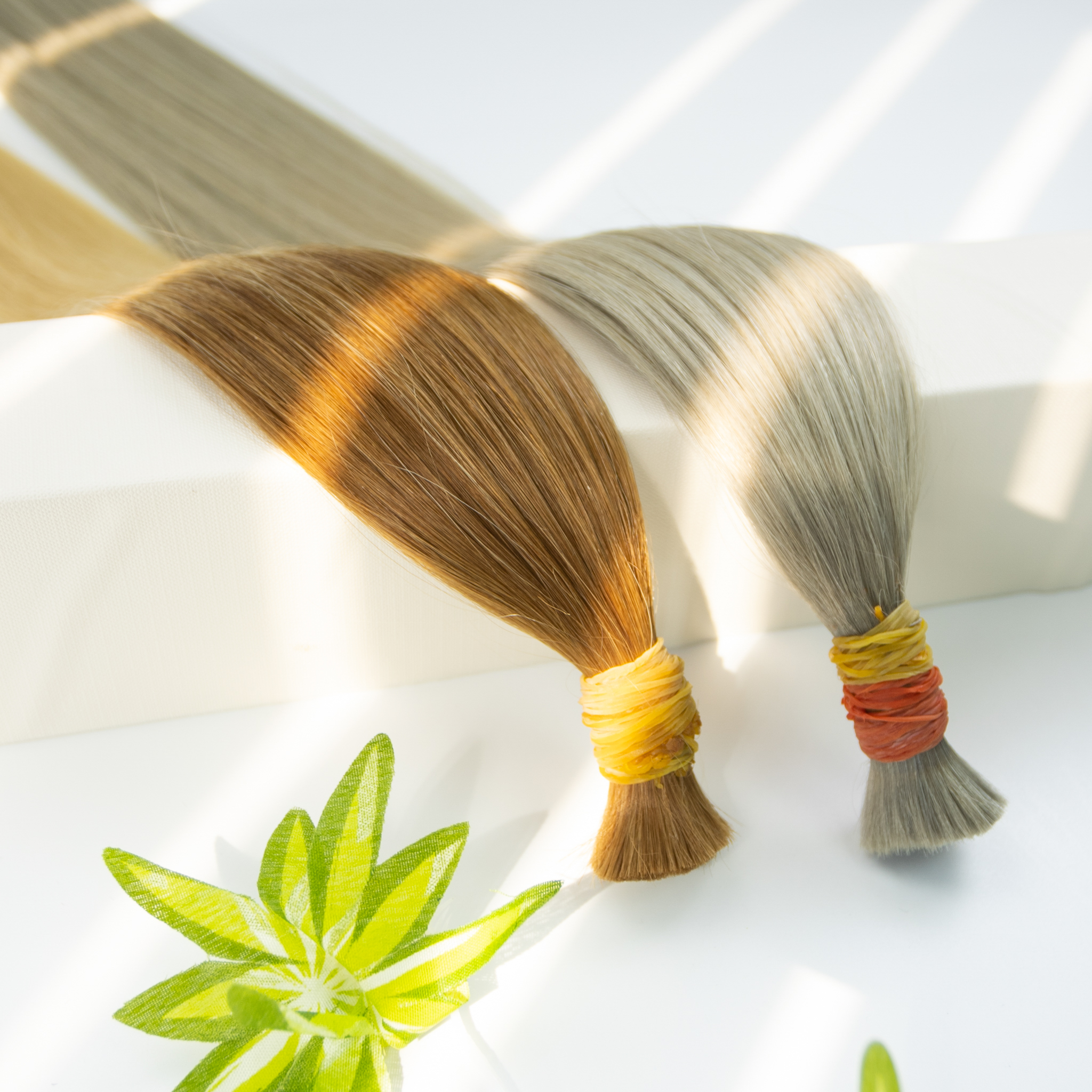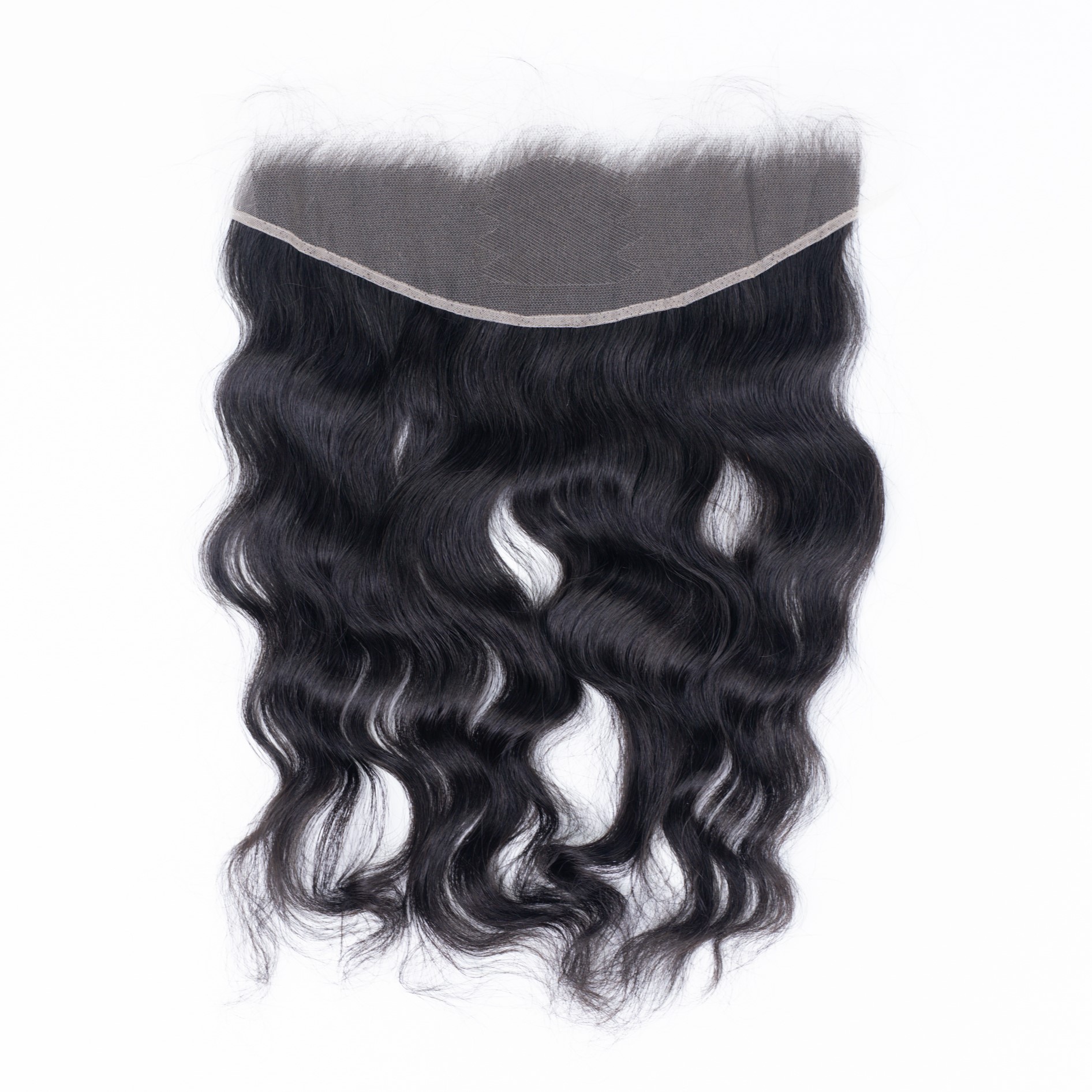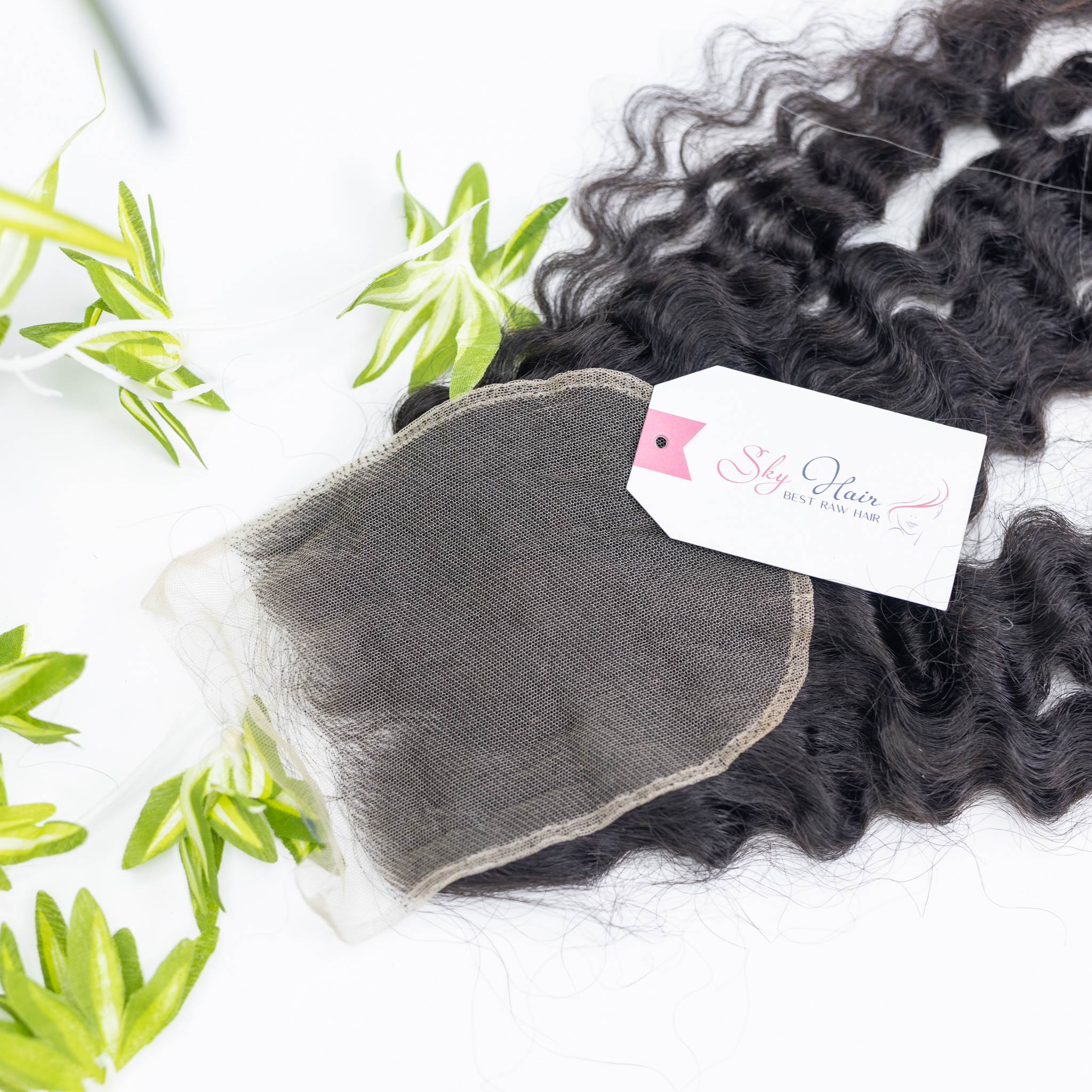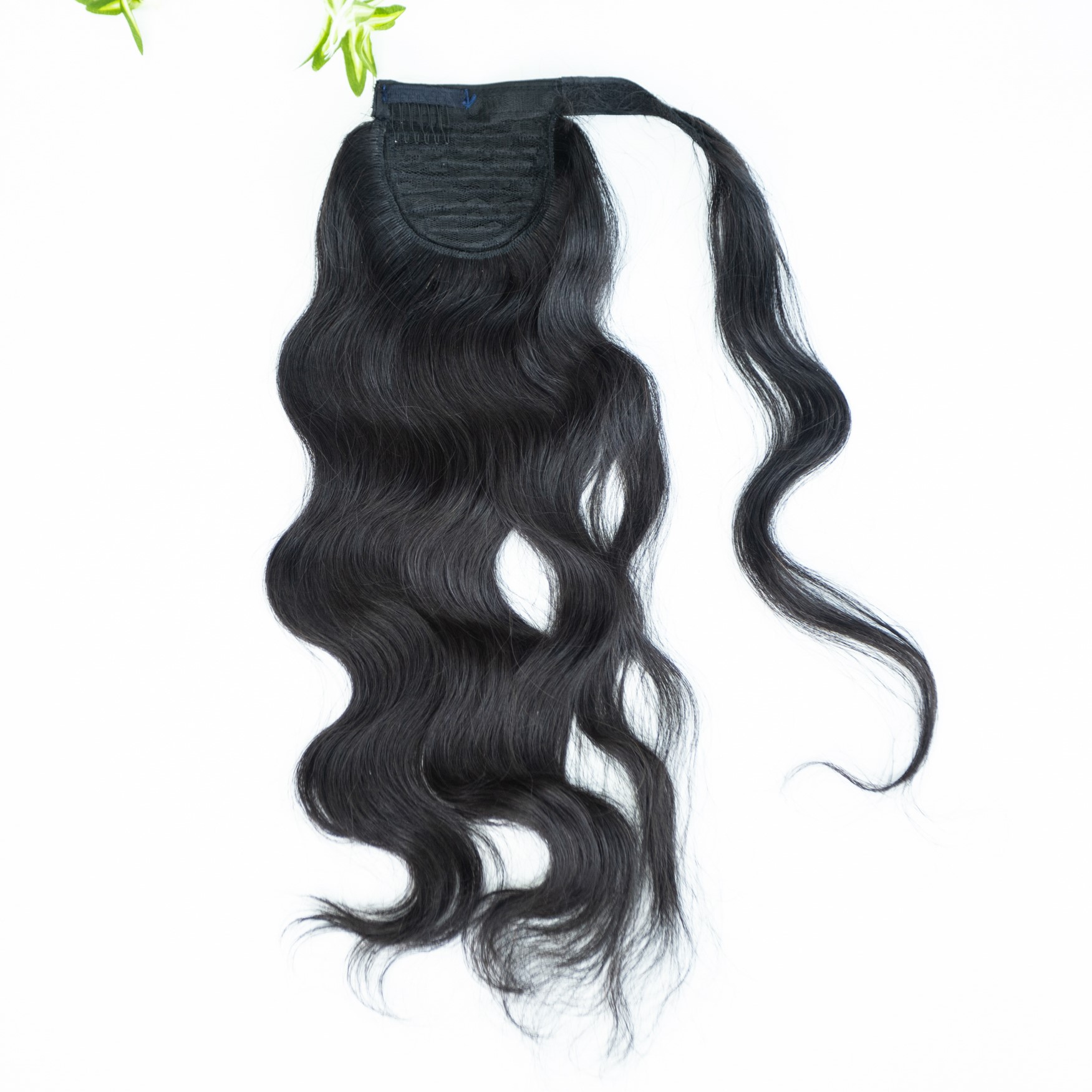All types of real hair extensions will eventually need to be taken out and either replaced or repositioned. Ideally you will have your extensions removed by a professional for the best results however it’s becoming more and more common for people to attempt the removal at home themselves. We can see the benefits – its free, timesaving and avoids the hassle of booking an appointment but it does come with some risk. Incorrectly removing human hair extensions can damage them and your own hair so we are going to give you a full run down of how to safely remove all types of hair extensions, what you will need and provide a difficulty rating for each.
How much does it cost to remove hair extensions?
On average a removal service which does not include a reposition can range from £50-£200. The factors that will affect the cost of your removal are the condition of the hair, the amount of hair extensions and the hair extension type. As you will learn in today’s blog some hair extensions are easier to remove than others, it is the easier types that tend to have a cheaper removal cost like a hair weft.
IMPORTANT: Things to be aware of before your removal…
If you plan to re-use your extensions make sure you remember where on the head they were removed from so that they can be placed back in their correct position. The easiest way to do this is keep all the back extensions in a bag labelled “back”. Repeat this for the 2 front sections labelling their bags “front left” and “front right”.
Throughout the removal you will notice some hair fall out, this is completely normal. We all naturally lose around 50-100 hairs a day however when you have extensions attached this hair does not fall out completely but becomes trapped inside the attachment. Therefore when your extensions are removed you will see a lot of hair coming out with them, this is simply the hair that would have naturally shed in the time you’ve had your extensions applied.
If the hair has been badly cared for and you have a lot of matting do not attempt the removal yourself, you will need help to remove the matting before taking out the extensions. Only remove your own hair extensions if the hair is in good condition and has no matting at the root.
How to remove Tape in extensions at home
Removing tape in hair extensions can get a little messy but its actually very easy when you have the right equipment. It’s important that you remove your tape hair extensions after 6-8 weeks of wear and either replace them or reposition them. They will need to be professionally reapplied however the removal and re-taping can be done safely at home if you follow the steps below.
What do you need:
- Tape extension remover
- Extensions safe hair brush
- Pintail comb
Sectioning Clips
Step 1: Before you start give your hair a thorough brush through to remove any knots on the ends.
Step 2: Section your hair to keep the removal as neat and mess free as possible. Using sectioning clips portion the hair from the parting down to the ear and clip this away from the back, repeat on the other side. Now take a horizontal section just above the first row of tapes at the nape of your neck and clip the hair on top tightly out of the way.
Step 3: Generously spray the tops of the first row of tapes and underneath with your tape extension remover spray and leave for 15-20 seconds.
Step 4: Gently peel the top tape away from the hair, spraying more remover if needed. If the tapes are very sticky and stubborn you can use the end of your pintail comb to delicately prise the tapes apart. Once you have loosened the tabs the tapes should easily peel away from the hair.
Step 5: When you finish removing each row of tapes give the hair comb from the roots using your pintail comb. The fine teeth will remove any glue, residue, knots or hair fallout that has been trapped in the tape. Repeat this process in rows all over the head until all the tapes are removed.
How to remove Micro ring hair extensions at home
Removing I-Tip Hair Extensions or Micro Ring Extensions from the hair can be tricky to do yourself, especially the back extensions so you may want to enlist a friend to help you with this. The actual removal itself is quite simple and uses no chemicals or heat. I-tips or micro-rings will need to be maintained after 6-8 weeks and then removed and repositioned after 12 weeks of wear.
What you need:
- Hair extension pliers
- Hair extension clamp tool
- Extensions safe hair brush
- Pintail comb
- Sectioning Clips
Step 1: Before you start give your hair a thorough brush through to remove any knots on the ends.
Step 2: Section your hair to keep the removal as neat and mess free as possible. Using sectioning clips portion the hair from the parting down to the ear and clip this away from the back, repeat on the other side. Now take a horizontal section just above the first row of micro-rings at the nape of your neck and clip the hair on top tightly out of the way.
Step 3: Using your clamp tool, simply squeeze the ring in the opposite direction to what it was closed in to open it. The ring should open and you should be able to easily pull the extension out. If the ring is tricky to open you can use a hair extension pliers tool to prise the ring open by twisting the ring with the prongs.
Step 4: Lay the extension down and slide the ring out from the hair strand. Gently comb the natural hair to remove any residue, hair fall out or knotting that has occurred over time.
Step 5: Repeat this process working from the bottom up through the head until all the extensions are removed.
How to remove weft hair extensions at home
Hair Weft or Weaves are applied in a variety of methods. They can be sewn in, glued in and attached with rings to the natural hair. We would not recommend removing a weft or hair weave yourself as scissors will need to be used to cut the thread sewn into the hair. You will not be able to clearly see what you are cutting around the back of your head and could accidently cut your own hair rather than the thread so you will need someone else to help you with this! Although removing weft hair extensions from your own hair yourself is not advised the good news is it is a very simple process for somebody else to do for you.

















